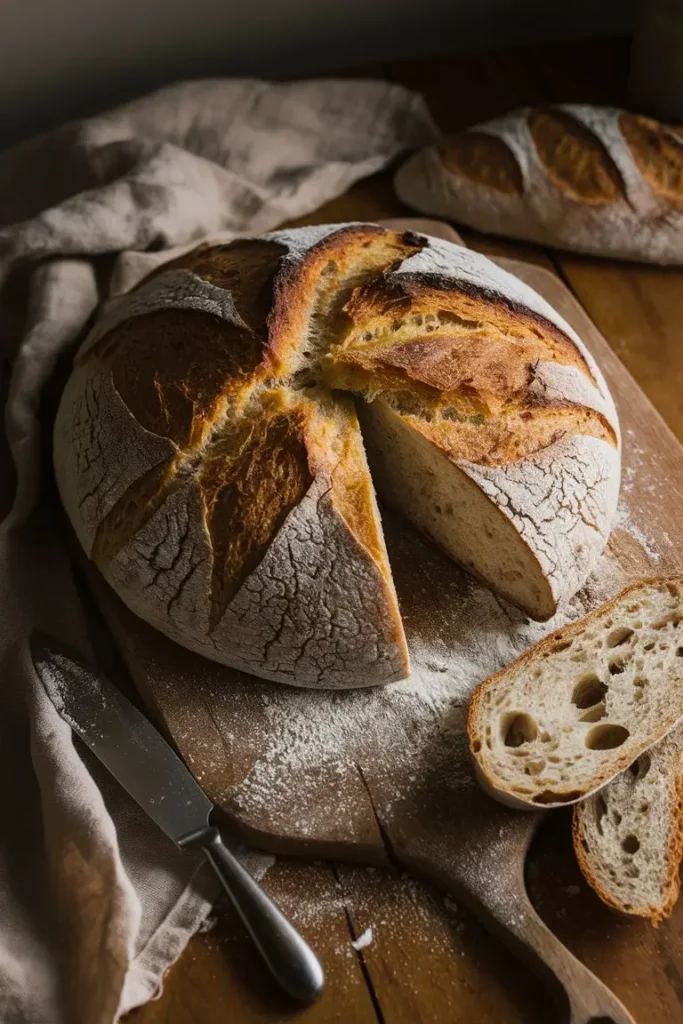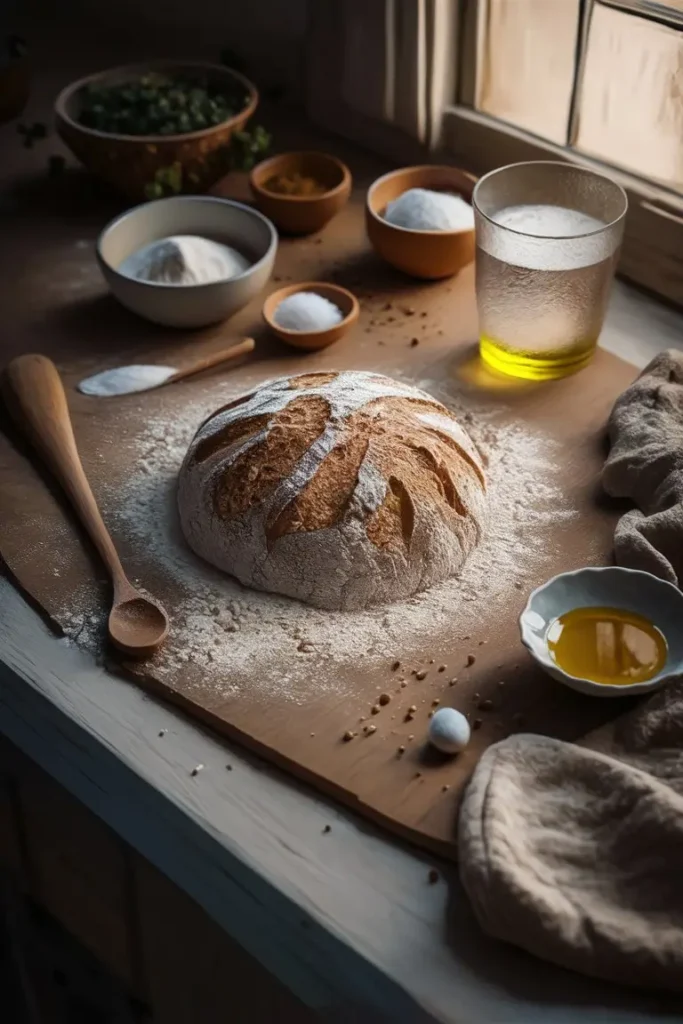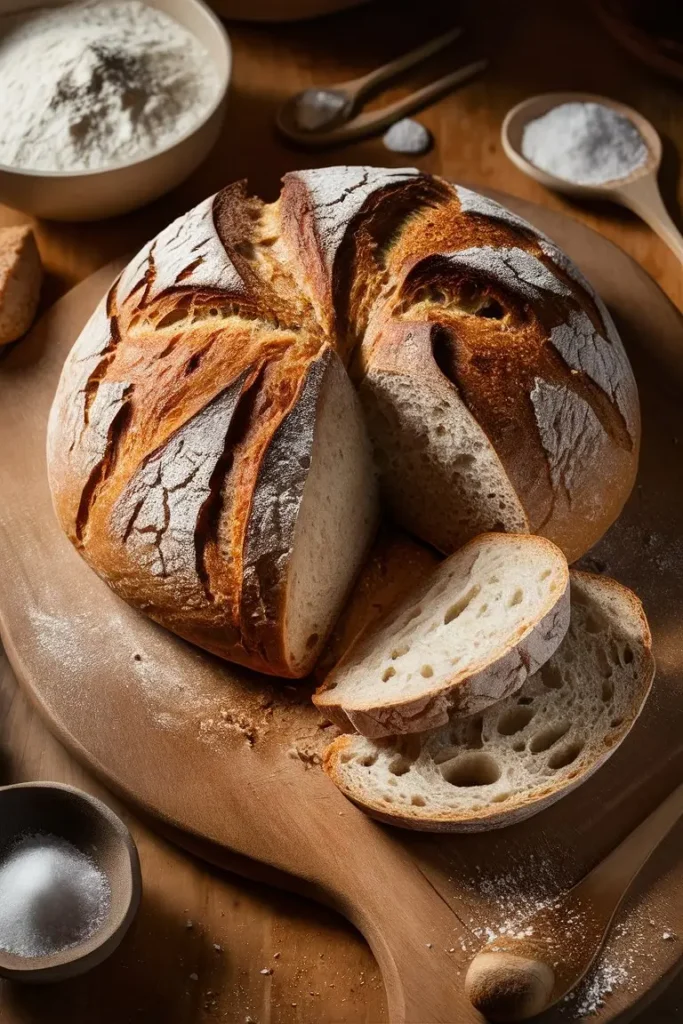3 Easy Ways to Elevate Your Artisan Bread Recipe Game Today
Table of Contents

Introduction: Can You Really Make Artisan Bread Recipe at Home?
Have you ever wondered why artisan bread from a bakery tastes so much better than what you bake at home? The secret isn’t some magical oven or years of training—it’s all about the little tweaks that take your homemade loaf from “meh” to “wow.” Whether you’re a beginner baker or someone who’s been kneading dough for years, this blog post will show you how to elevate your Artisan Bread Recipe with three simple tricks. Ready to impress your friends and family (and maybe yourself)? Let’s get started!
Overview: What Makes This Recipe Special?
This Artisan Bread Recipe is designed to be approachable yet impressive. It requires just a few basic ingredients, minimal hands-on time, and no fancy equipment. In fact, many recipes claim it’s the easiest bread you’ll ever make—and they’re not wrong. With only 15–20 minutes of active prep time and a few hours of resting, you’ll have a crusty, golden loaf perfect for sandwiches, soups, or just slicing fresh with butter.
The difficulty level is beginner-friendly. If you’ve never baked bread before, don’t worry—this Artisan Bread Recipe uses simple techniques like folding instead of kneading, which makes it accessible to everyone. Plus, we’ll share tips along the way to ensure success every time.
Essential Ingredients: Why Each Component Matters
Great bread starts with great ingredients. Here’s what you’ll need:

- Bread Flour : Unlike all-purpose flour, bread flour has more protein, which creates a chewier texture and better rise. If you don’t have bread flour, you can substitute all-purpose, but expect slightly less structure.
- Yeast : Instant yeast works best because it doesn’t require proofing, saving you time. Active dry yeast also works if you dissolve it in warm water first.
- Salt : Salt enhances flavor and strengthens gluten, giving your bread its signature elasticity.
- Water : Use lukewarm water to activate the yeast without killing it. Cold water slows fermentation, while hot water can kill the yeast.
Substitutions and Variations :
- Swap half of the flour for whole wheat or rye for added nutrition and depth of flavor.
- Add-ins like herbs, nuts, or dried fruit can transform your loaf into something unique.
Step-by-Step Instructions: How to Prepare Artisan Bread Recipe
Now let’s dive into the process. Follow these steps carefully, and you’ll end up with a beautiful loaf.
- Mix Your Ingredients : Combine 3 cups of bread flour, 1 teaspoon of salt, 1 packet (or 2 ¼ teaspoons) of instant yeast, and 1 ½ cups of lukewarm water in a large bowl. Stir until a shaggy dough forms.Tip : Don’t overmix! A rough consistency is fine; the dough will smooth out during resting.
- Let It Rest : Cover the bowl with plastic wrap or a damp towel and let it sit for 8–12 hours. This long rest develops flavor and allows the dough to double in size.
- Shape the Dough : Gently fold the edges of the dough toward the center, then flip it seam-side down onto a floured surface. Shape it into a round loaf.
- Second Rise : Place the shaped dough on a piece of parchment paper, cover it, and let it rest for another hour. During this time, preheat your oven to 450°F (230°C).
- Bake : Slash the top of the loaf with a sharp knife or razor blade to allow for expansion. Bake for 30 minutes, either directly on a baking sheet or inside a Dutch oven for extra crispiness.Pro Tip : Spraying water into the oven or placing a pan of water on the bottom rack adds steam, creating a professional crust.
Assembly: Building the Perfect Loaf
Once your dough is ready, here’s how to assemble everything for maximum impact:
- Folding Technique : Instead of kneading, use gentle folds to develop gluten. Fold the dough in half, rotate it 90 degrees, and repeat 4–5 times. This method is easier on your arms and yields excellent results.
- Presentation Tips : For an Instagram-worthy loaf, dust the top with flour before slashing. Experiment with different patterns for visual interest.
Storage and Make-Ahead Tips
One of the best things about artisan bread recipe is its versatility. Here’s how to keep it fresh:
- Room Temperature : Store your bread in a paper bag or loosely wrapped in a kitchen towel for up to two days. Avoid plastic bags, as they trap moisture and soften the crust.
- Freezing : Slice the loaf and freeze individual pieces in a zip-top bag. Reheat slices in the toaster or oven for quick, fresh-tasting bread.
- Make-Ahead Option : Prepare the dough the night before and refrigerate it overnight. Bring it to room temperature before shaping and baking.
Recipe Variations: Get Creative with Your Loaf
Why stick to plain bread when there are endless possibilities?
- Herb Infusion : Mix rosemary, thyme, or oregano into the dough for fragrant, savory loaves.
- Cheese Twist : Fold shredded Parmesan or cheddar into the dough for a cheesy surprise.
- Sweet Treats : Add cinnamon and raisins for a sweet twist, perfect for breakfast or dessert.
Conclusion: Your Next Great Adventure in Baking
There you have it—three easy ways to elevate your Artisan Bread Recipe. From choosing the right flour to mastering the art of folding, these small adjustments can make a big difference. So grab your apron, roll up your sleeves, and give it a try. Who knows? You might discover a new passion for baking along the way!

FAQs: Everything You Need to Know About Artisan Bread
- Is artisan bread healthier than store-bought bread? Yes! Many artisan bread recipe are made with fewer additives and higher-quality ingredients, making them richer in nutrients like fiber.
- Can I bake this recipe without a Dutch oven? Absolutely! While a Dutch oven helps create steam, you can still achieve a crispy crust by spraying water into the oven during baking.
- How do I know when my bread is done? Tap the bottom of the loaf—it should sound hollow. Alternatively, check the internal temperature with a thermometer; it should read around 200°F (93°C).
- What if my dough doesn’t rise? Double-check your yeast expiration date and water temperature. Yeast needs warmth—not heat—to activate properly.
- Can I use this recipe for pizza dough? Definitely! Roll out the dough thinly and top with your favorite ingredients for a delicious homemade pizza.
Best Artisan Bread Recipe
- Best Gluten Free Bread What Makes These 6 Recipes Stand Out?
- How to Find the Best Bread Pudding Near Me in Just One Day
- 5 Creative Ways to Use Bread and Crumbs in Your Recipes
